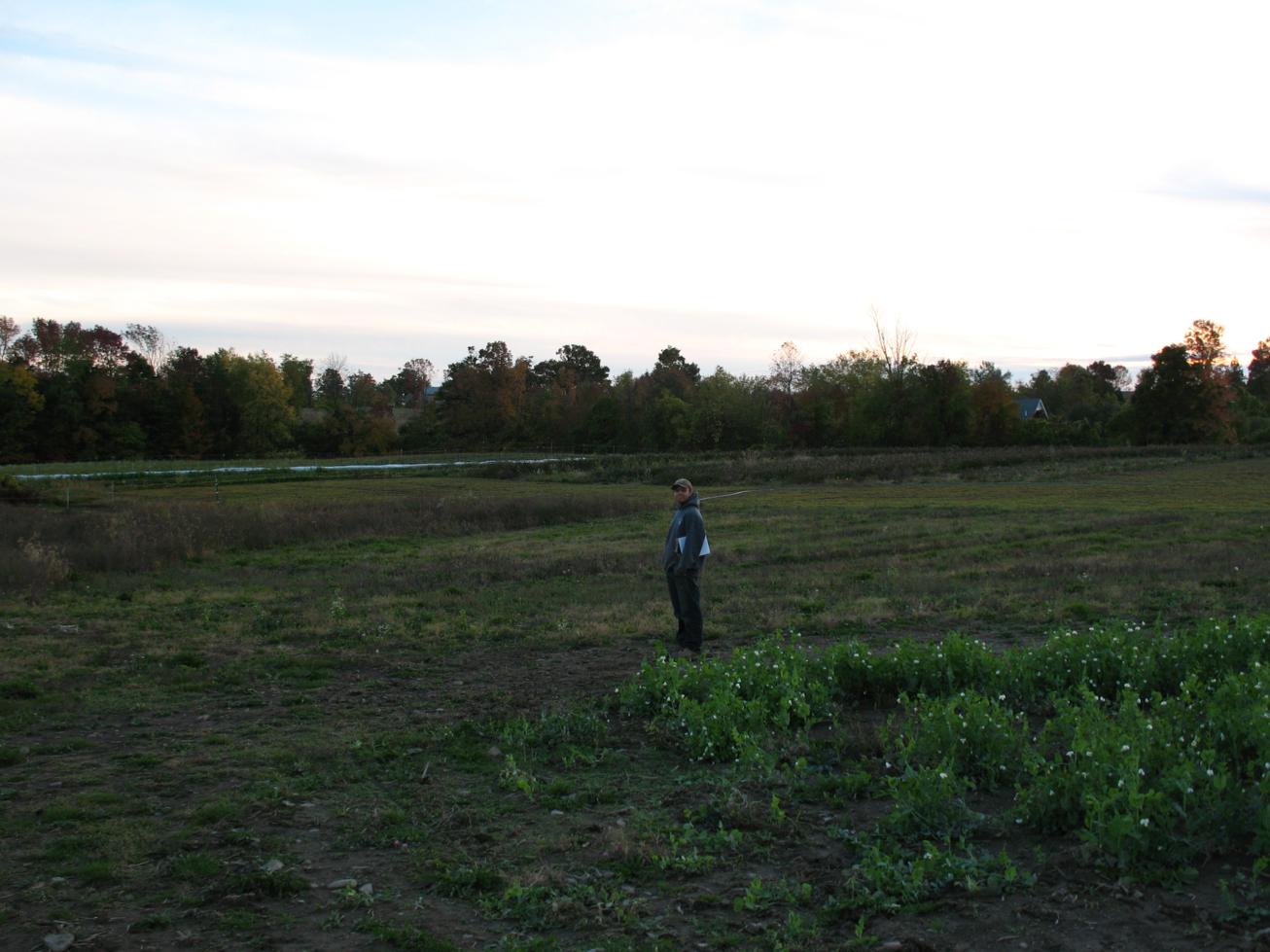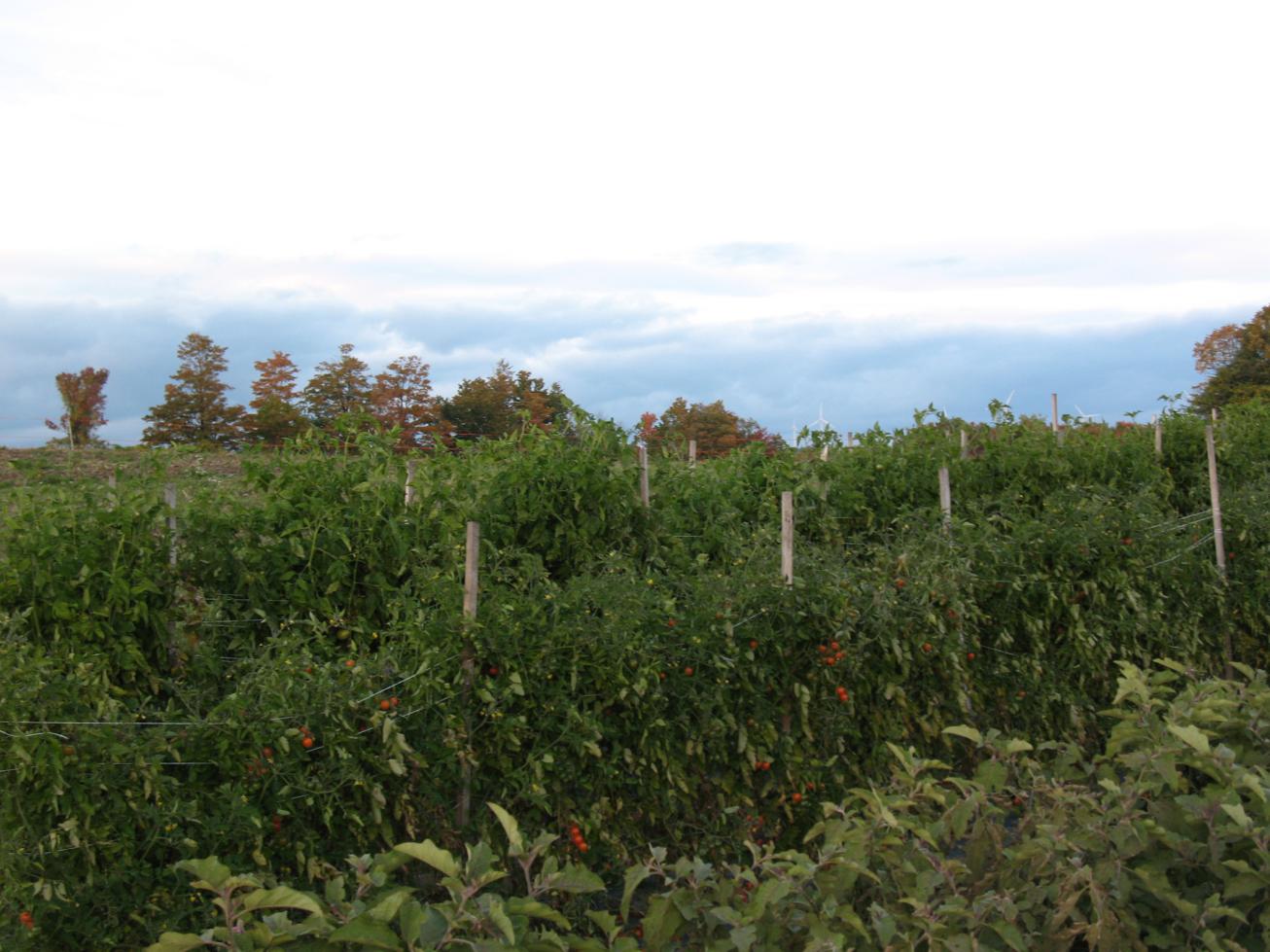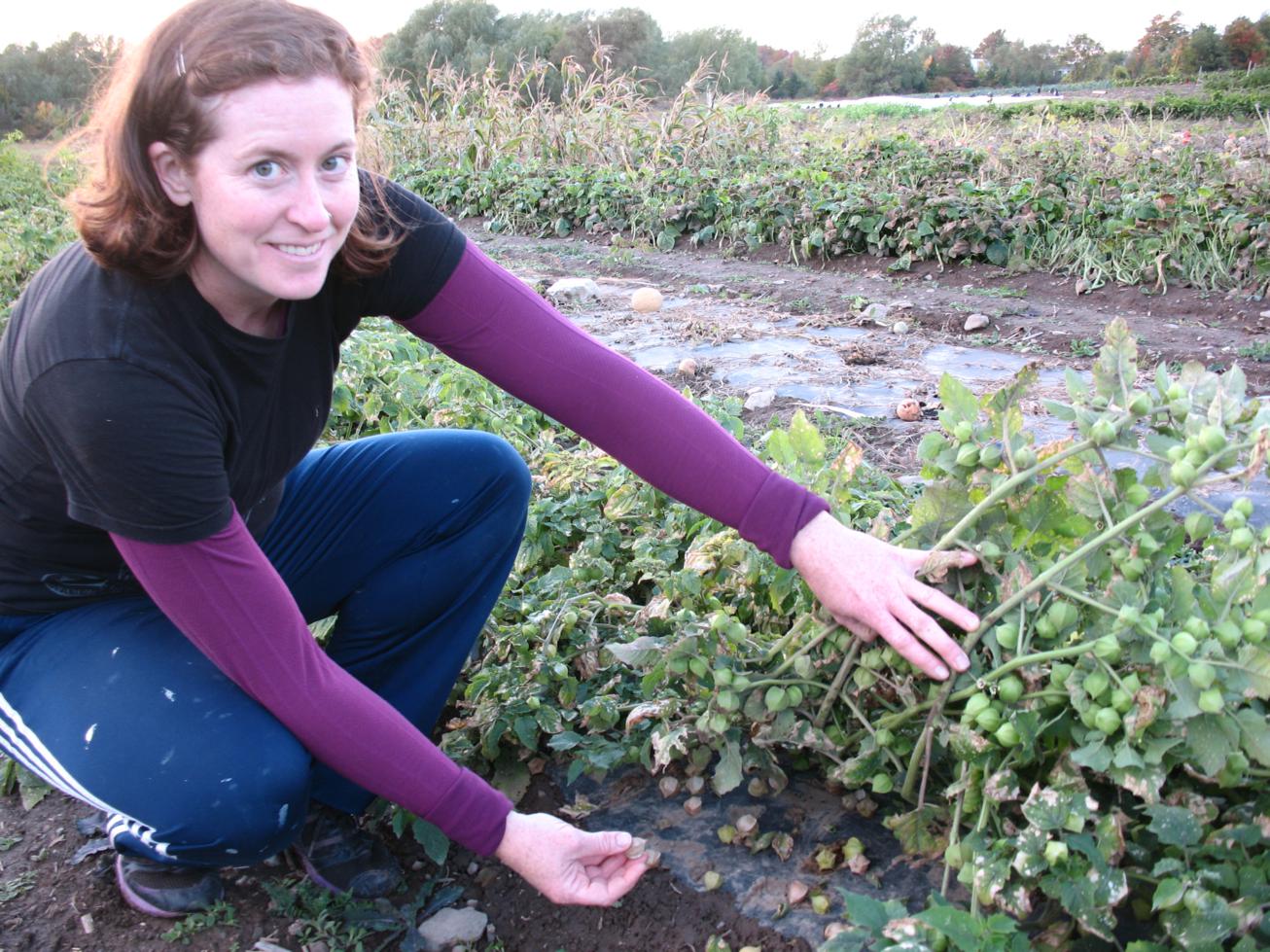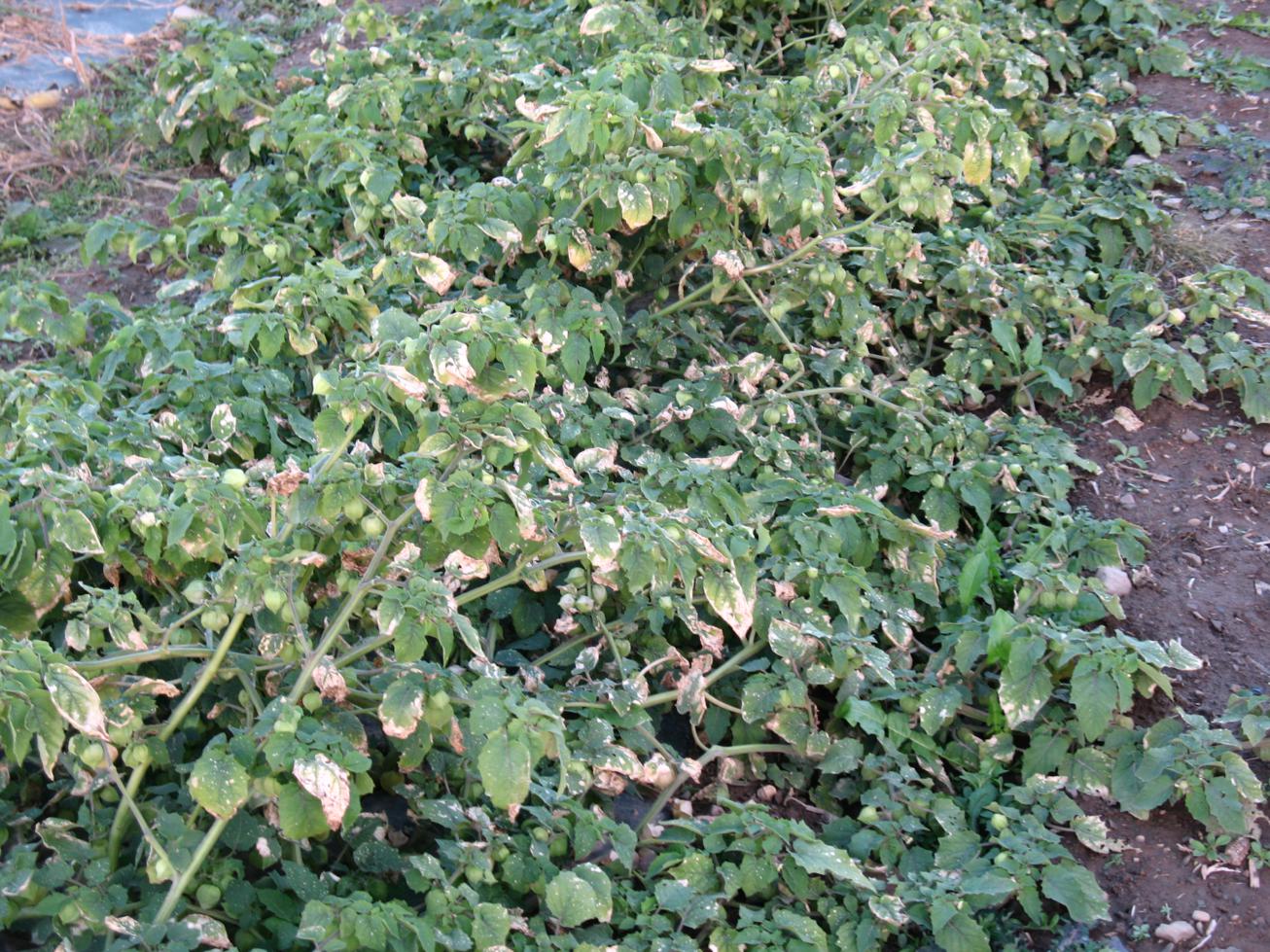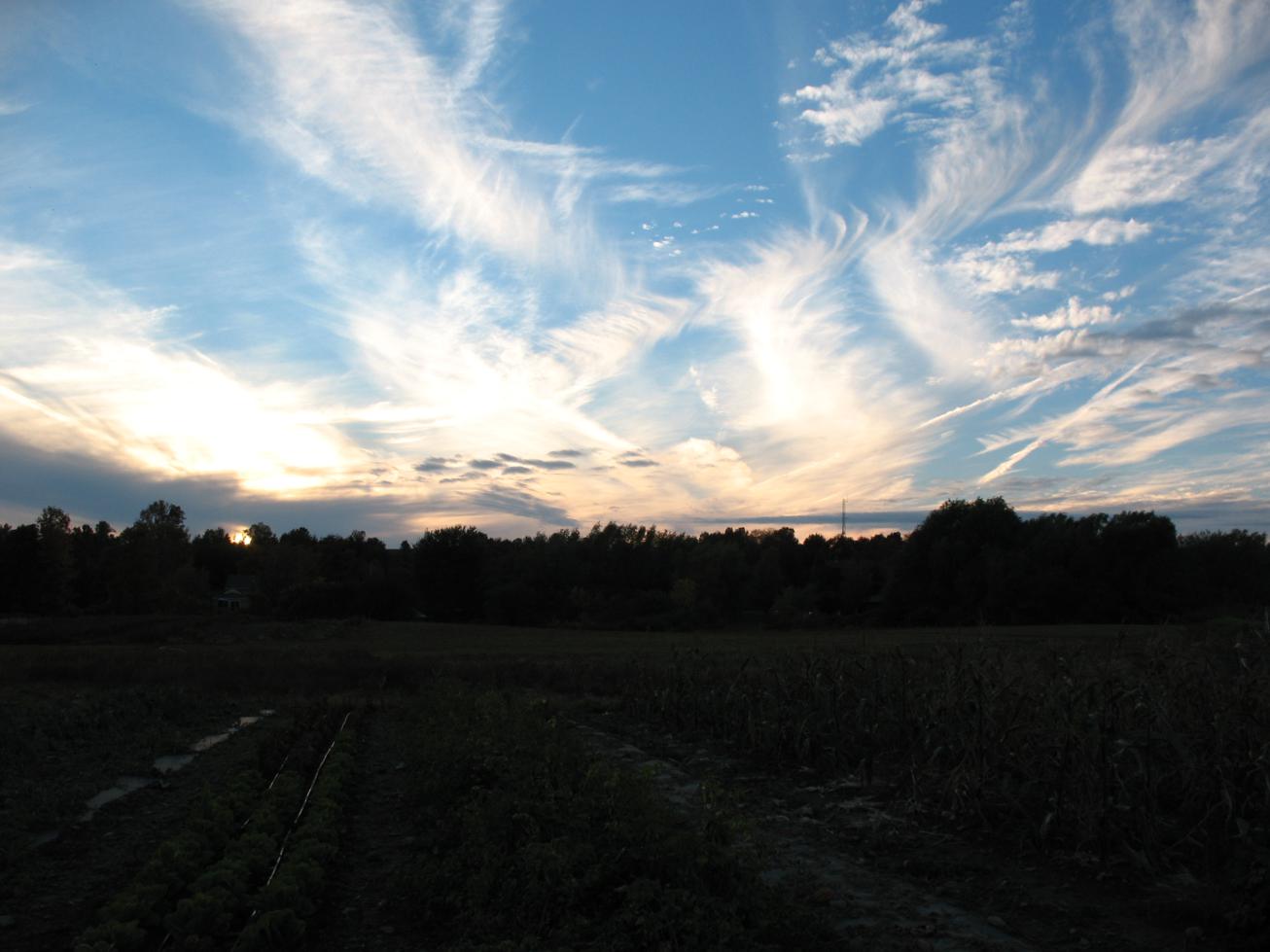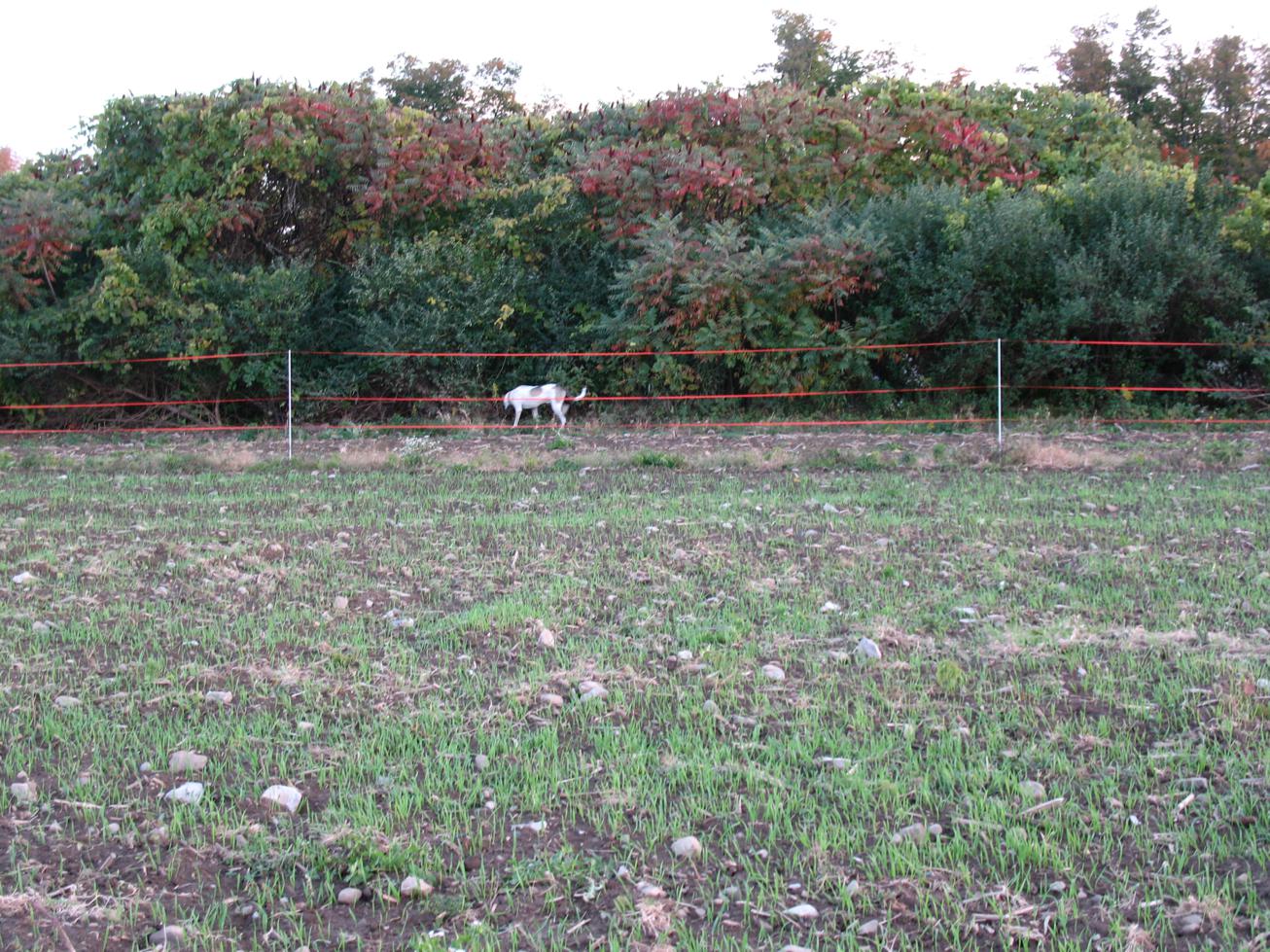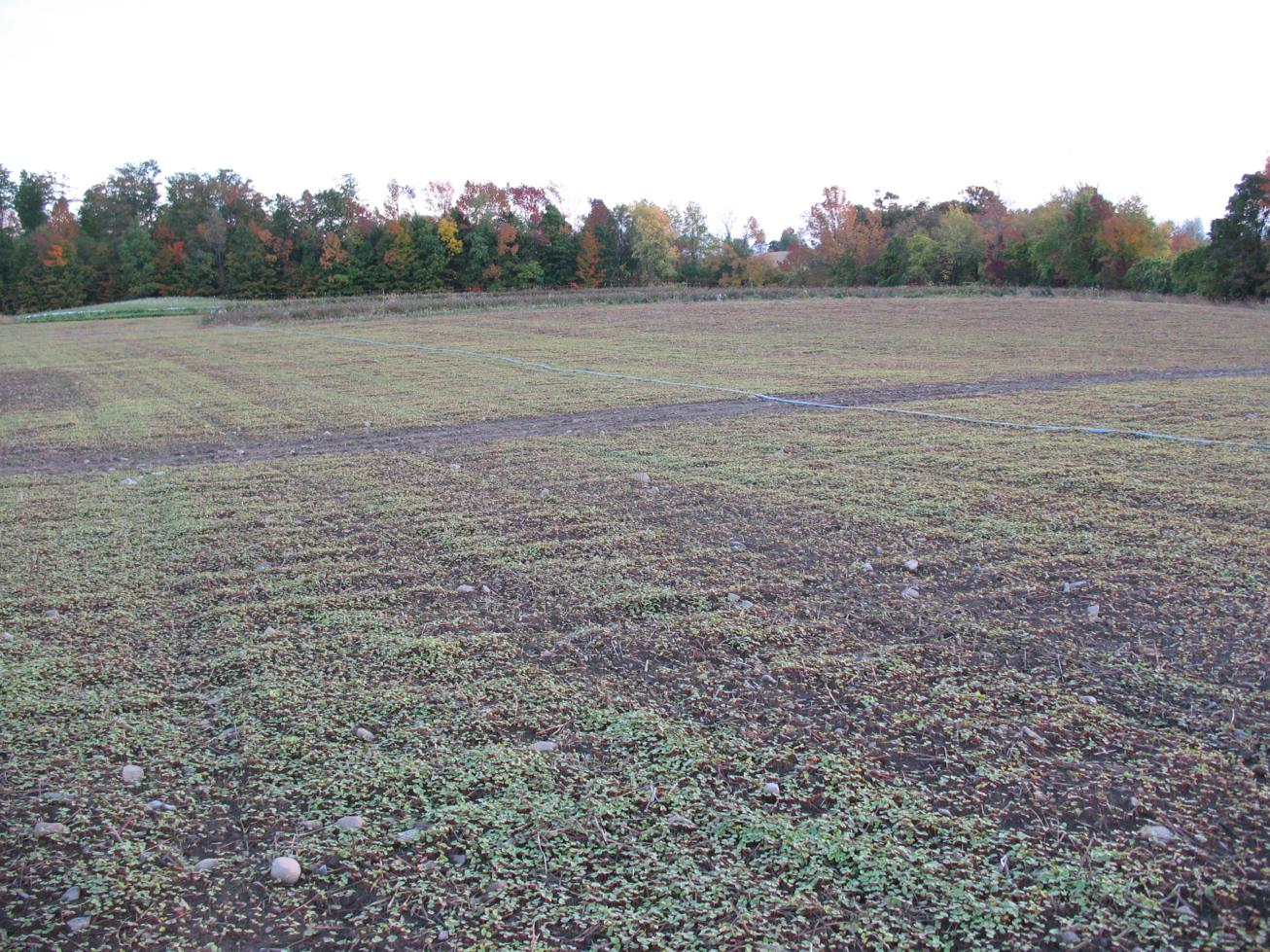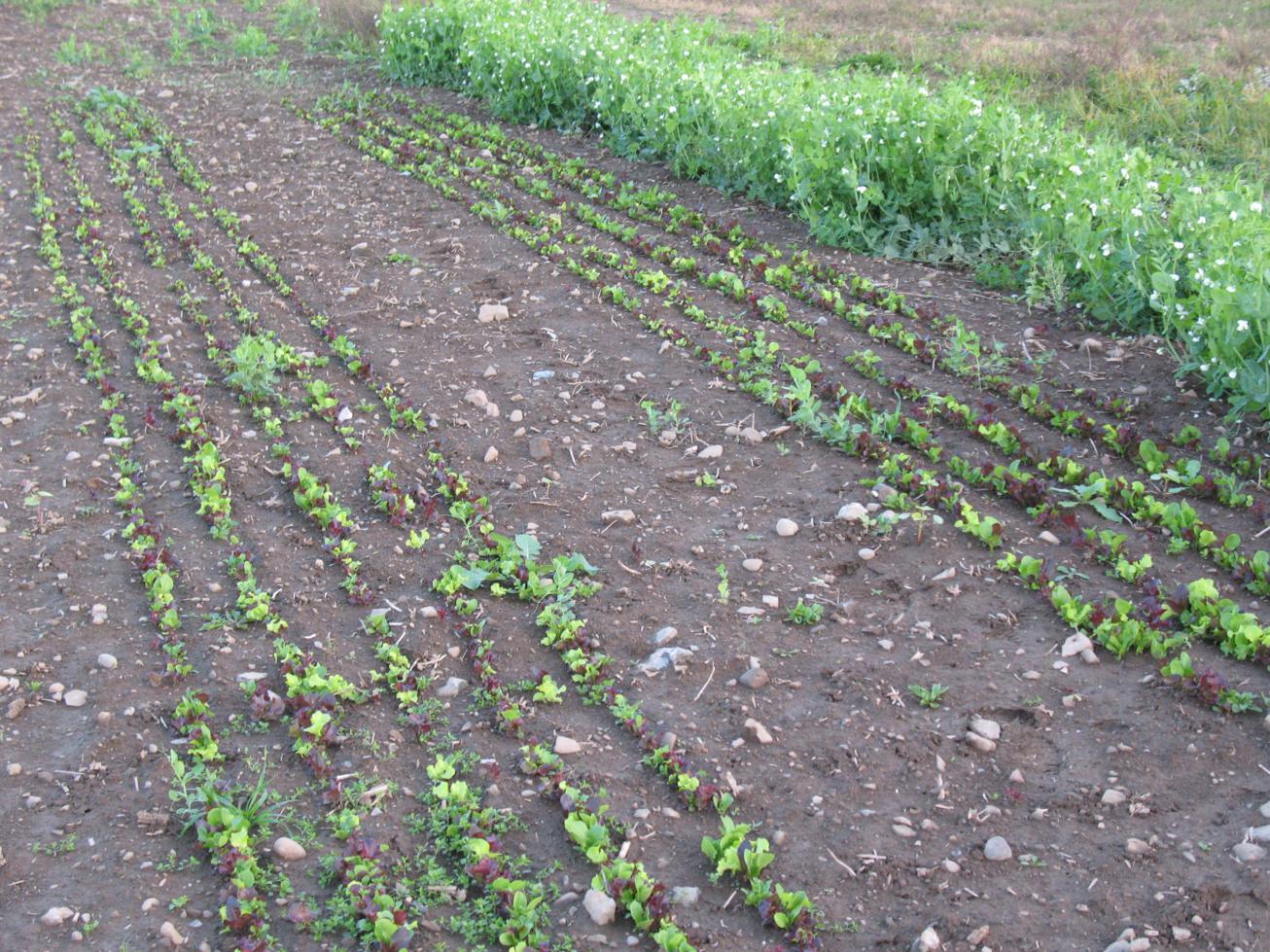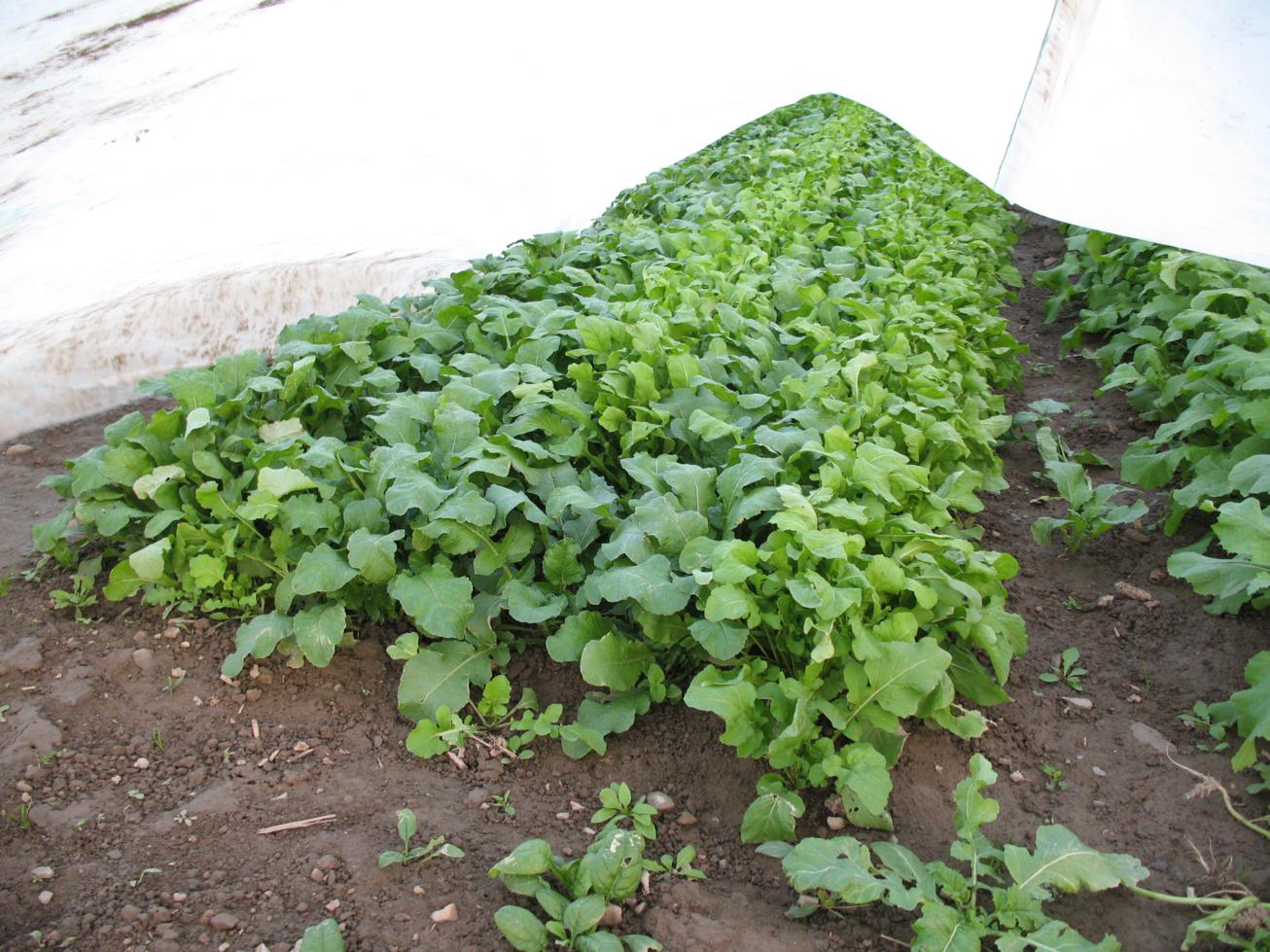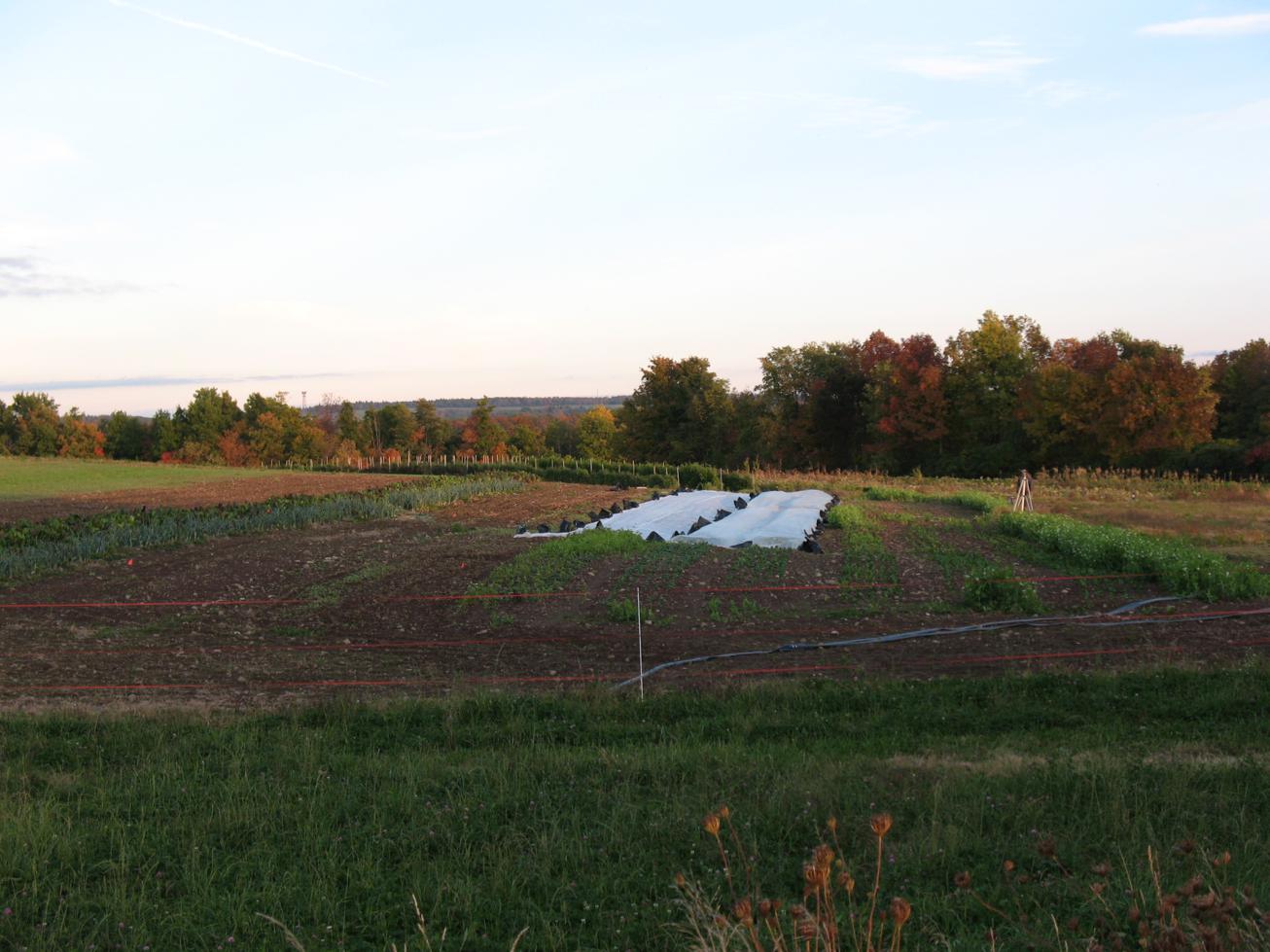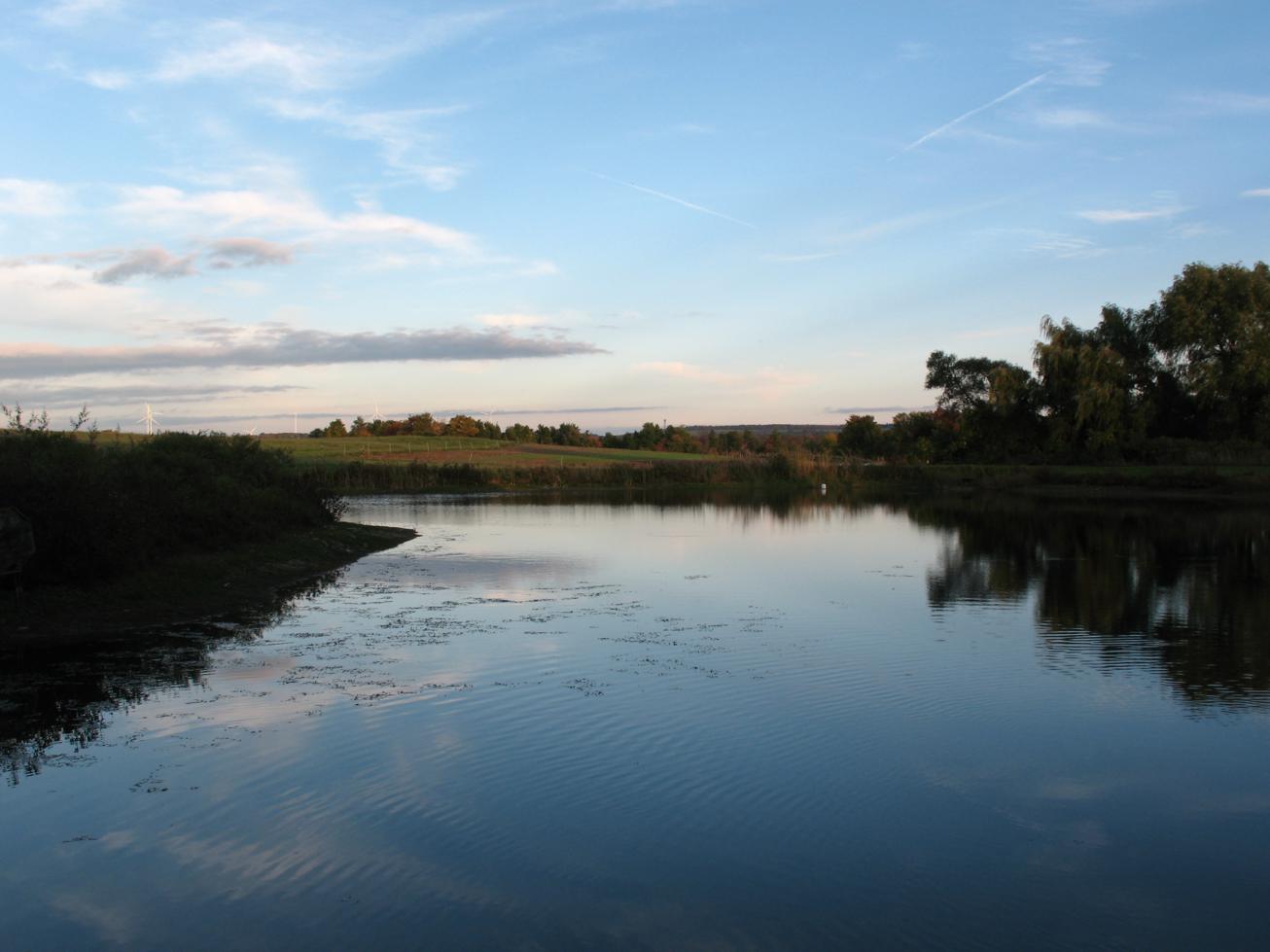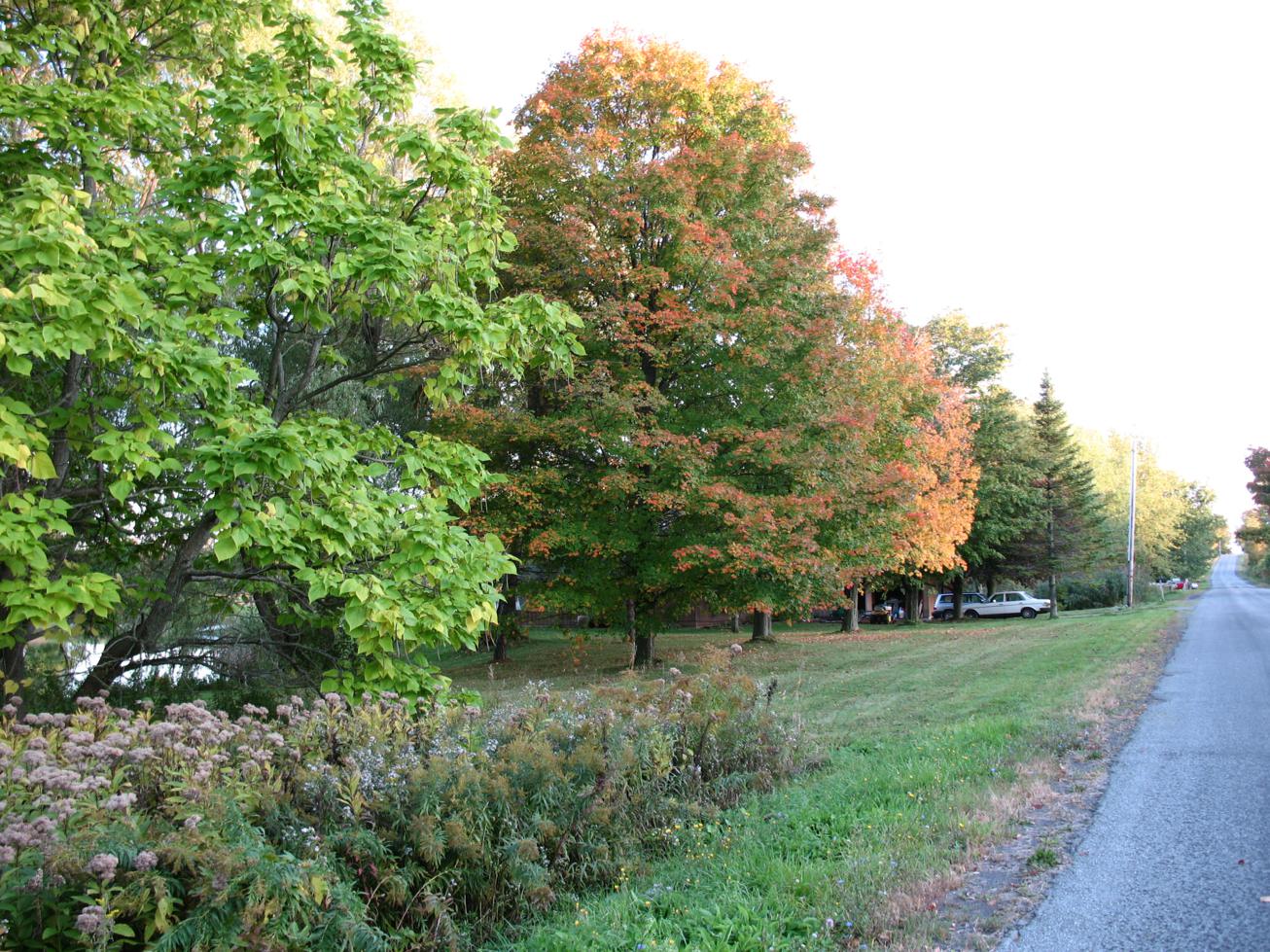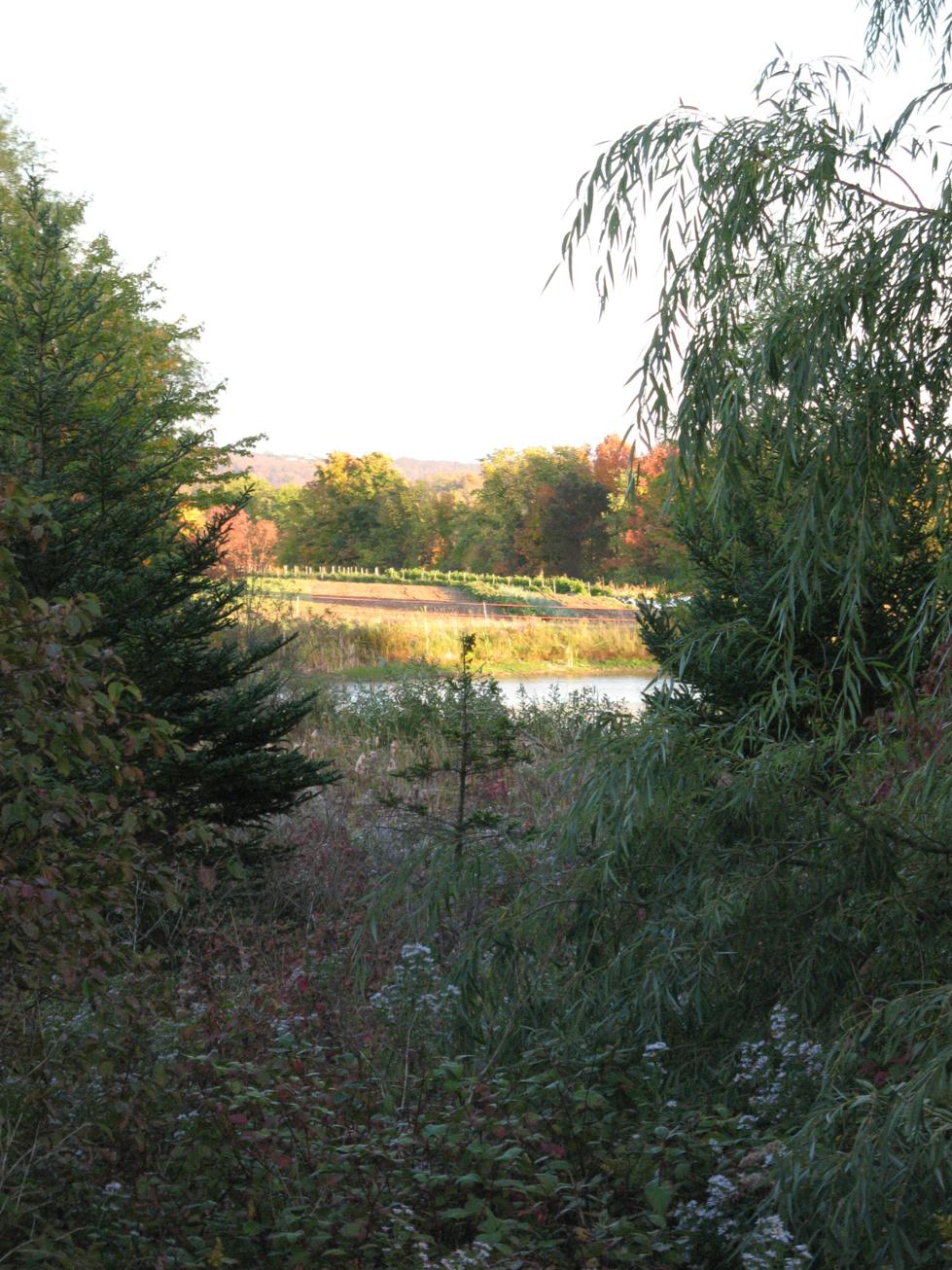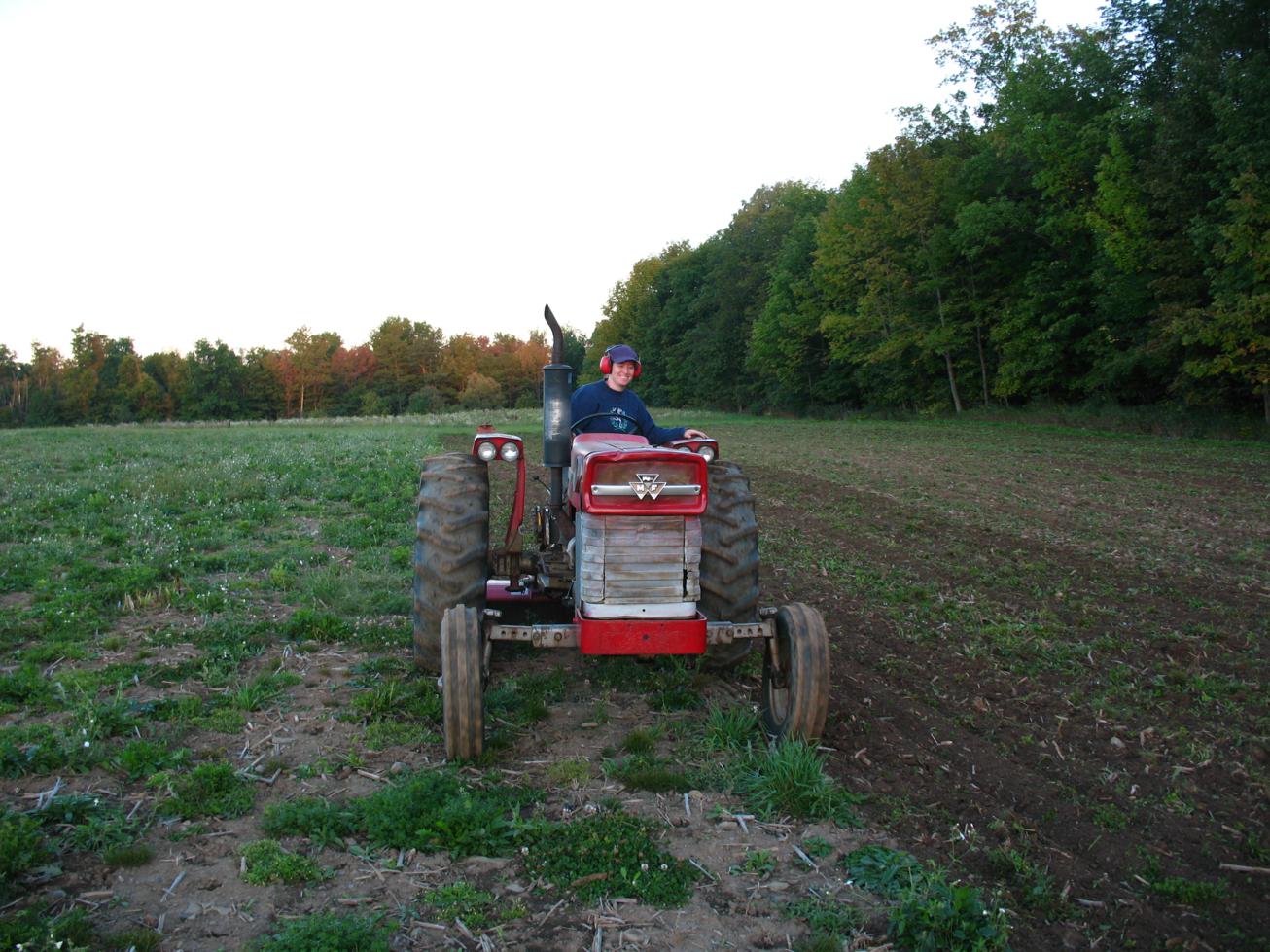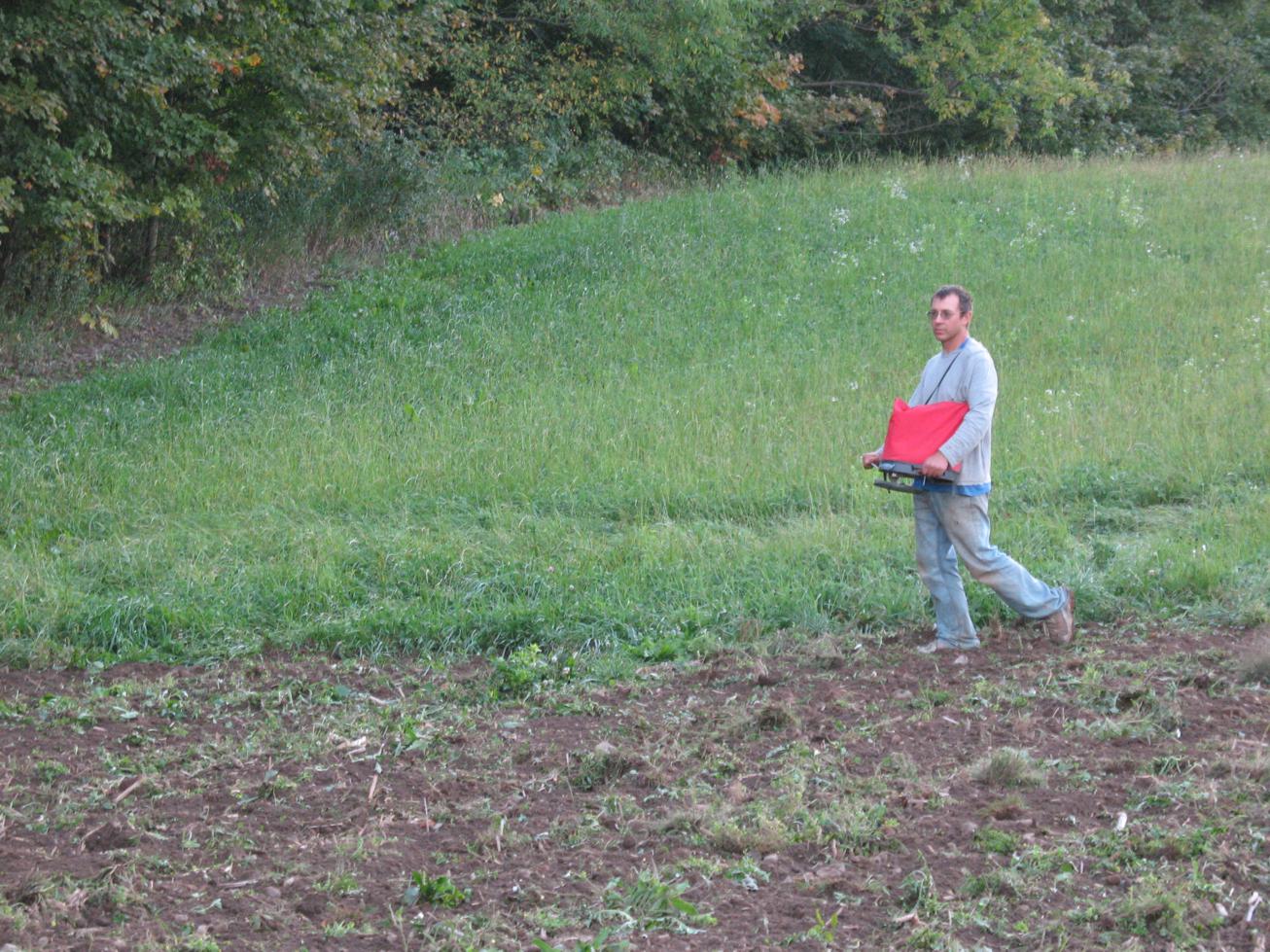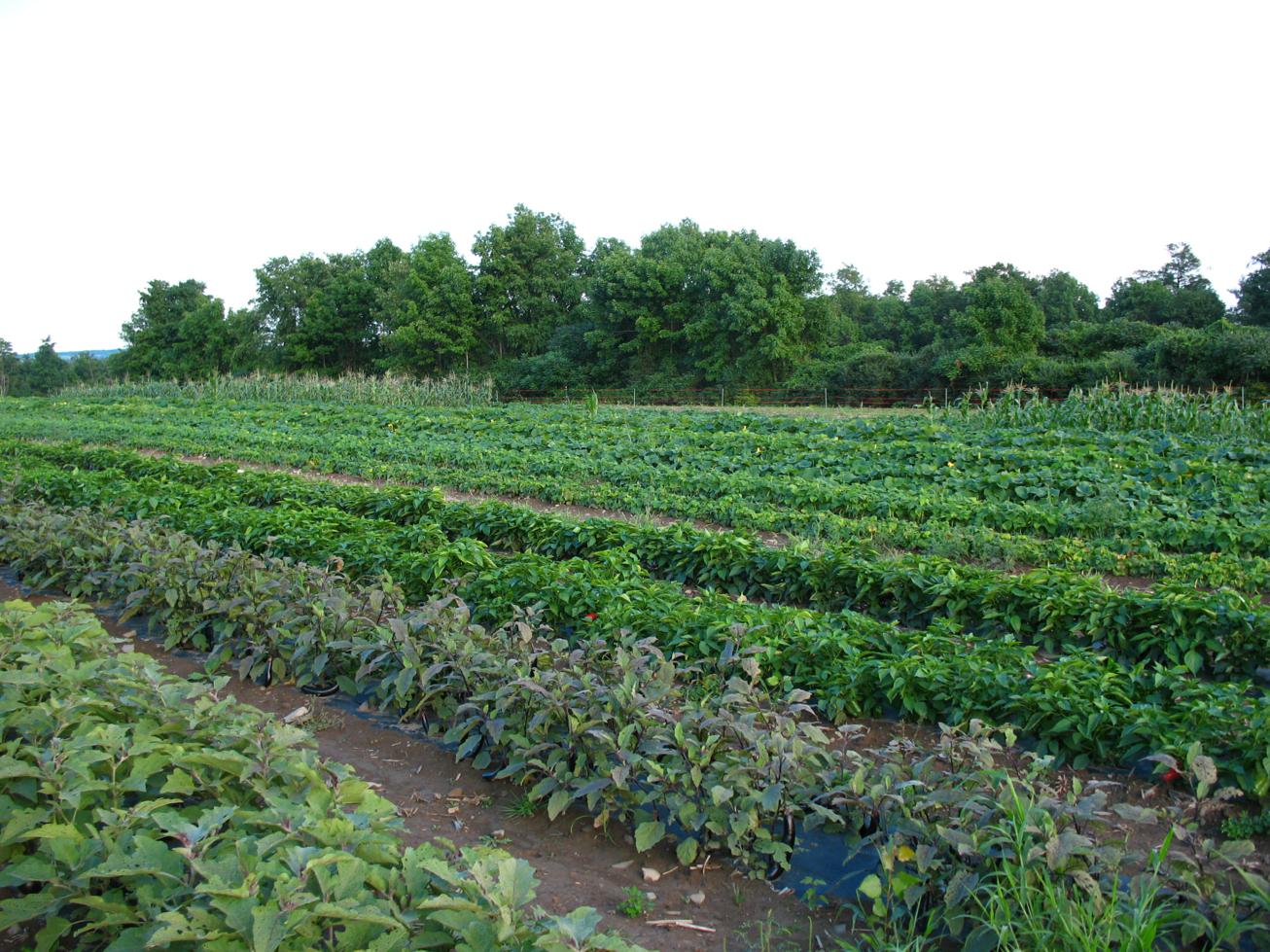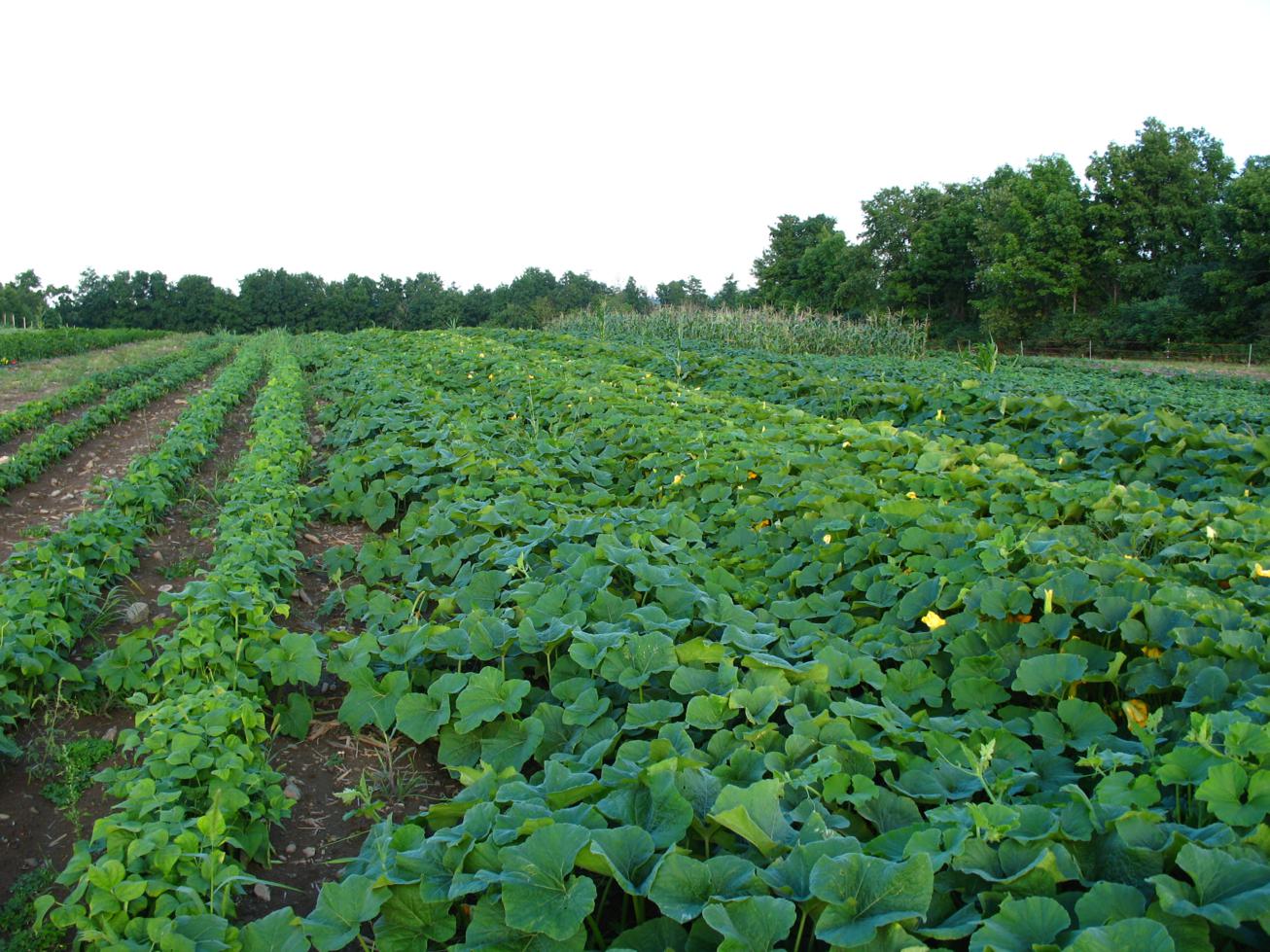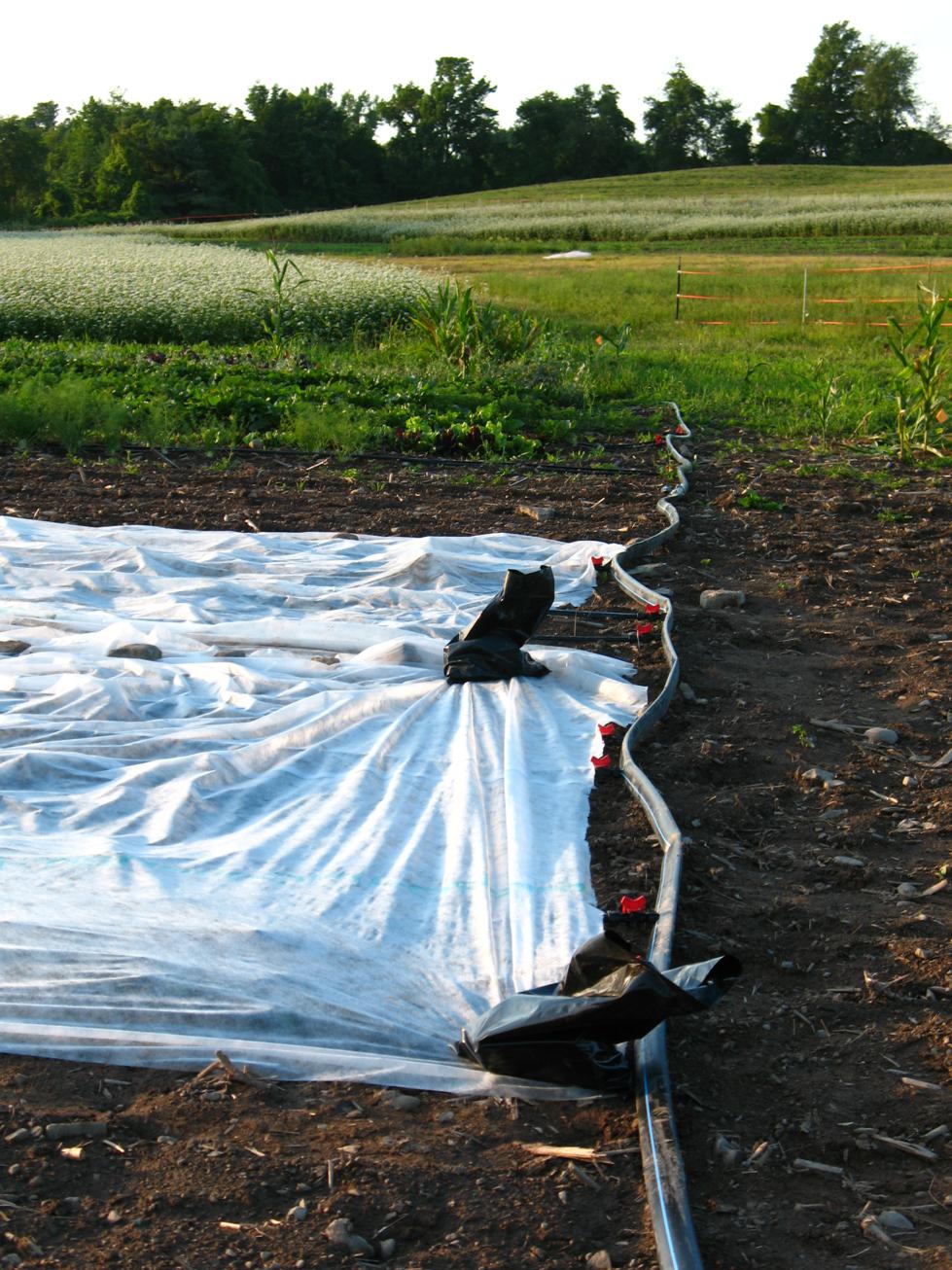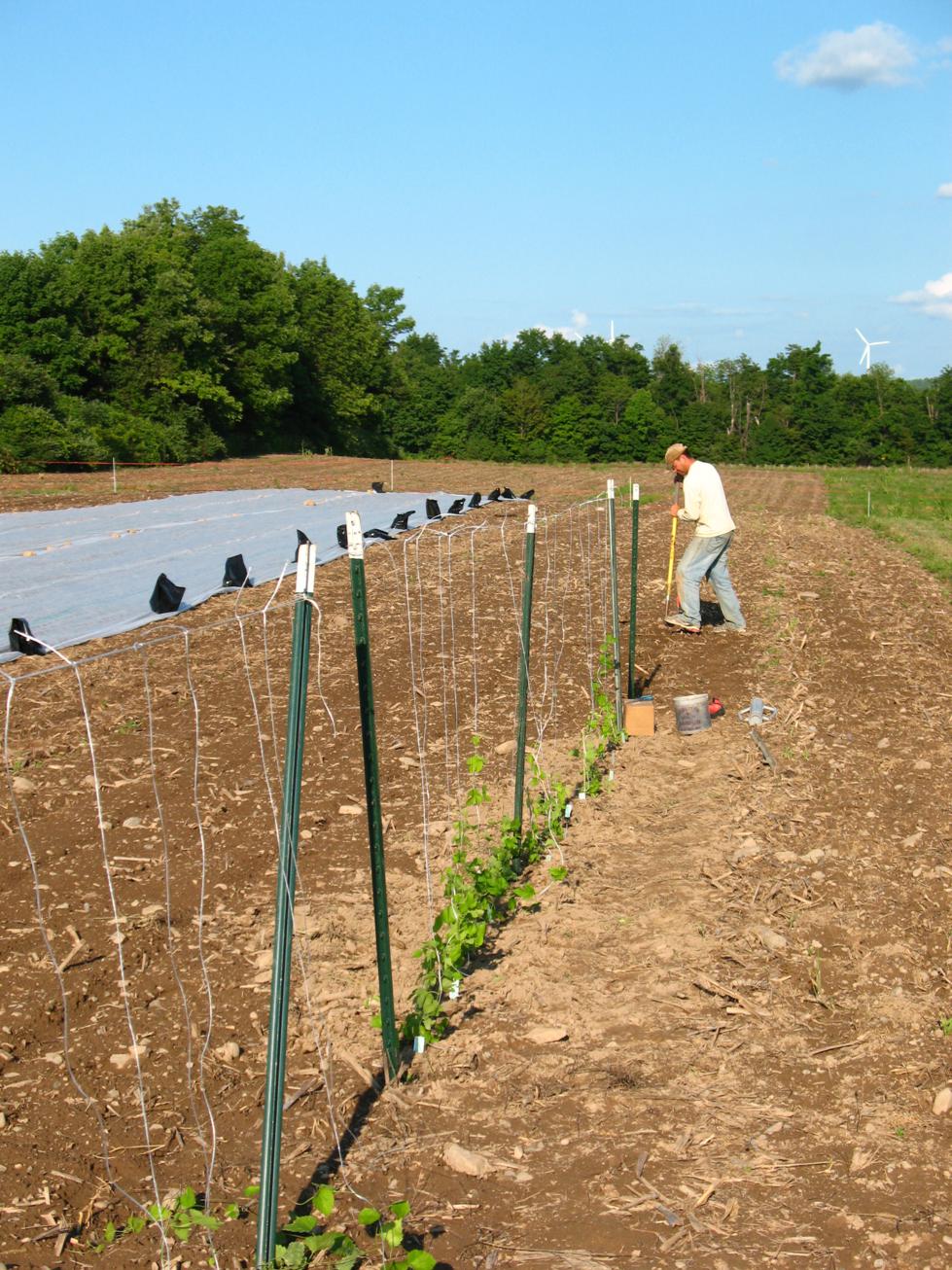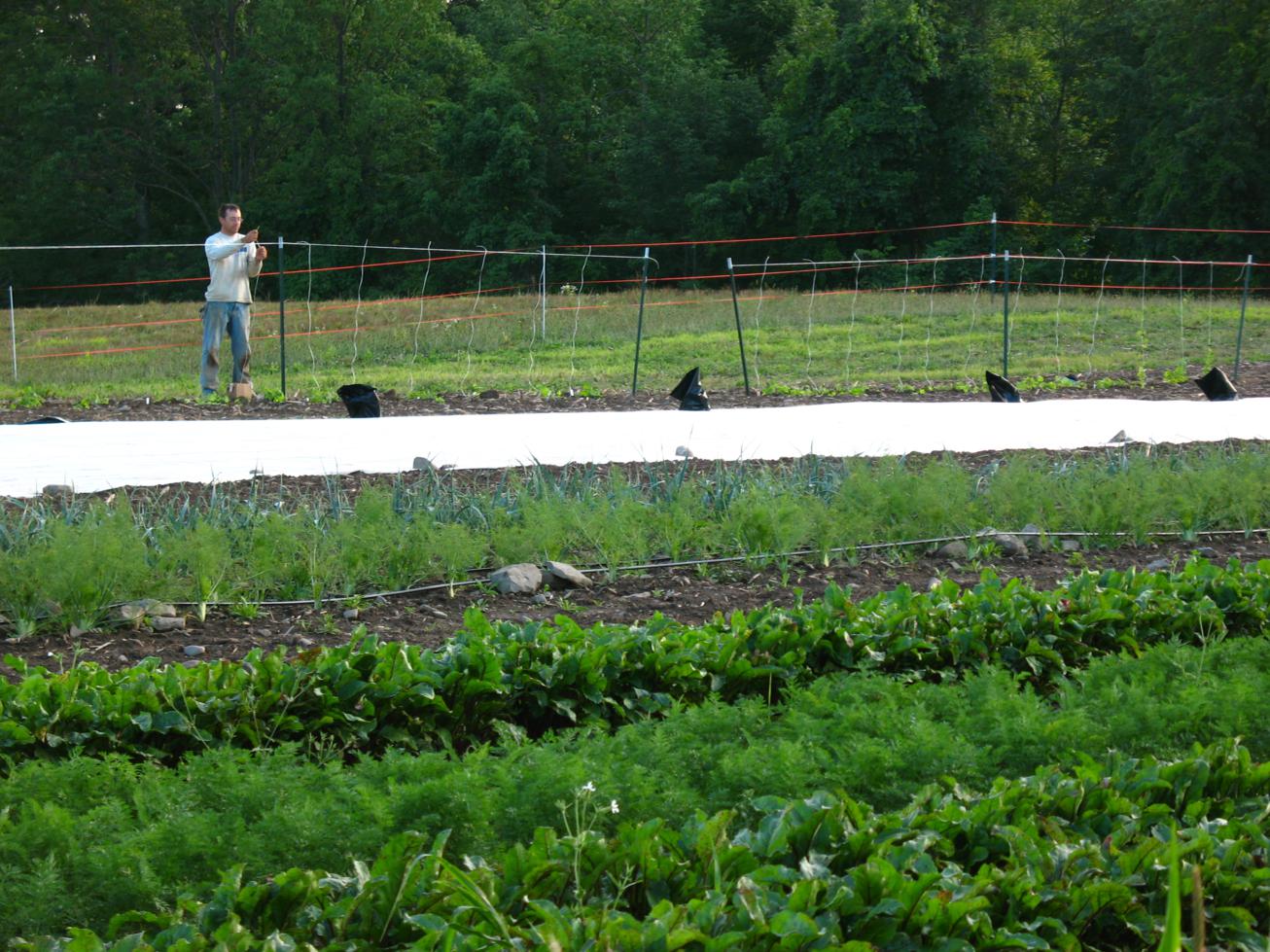Planting Cover Crops--Winter Rye!
/This growing season is nowhere near over, but we are already doing a fair bit of work to prep for next growing season! As crops finish producing, we've been tilling them in and putting buckwheat in the beds in their place. At this point, most of the buckwheat is mowed down and we are planting our winter cover crops. Cover crops are important on most farms, particularly newer ones like ours, where the soils can use some improving.
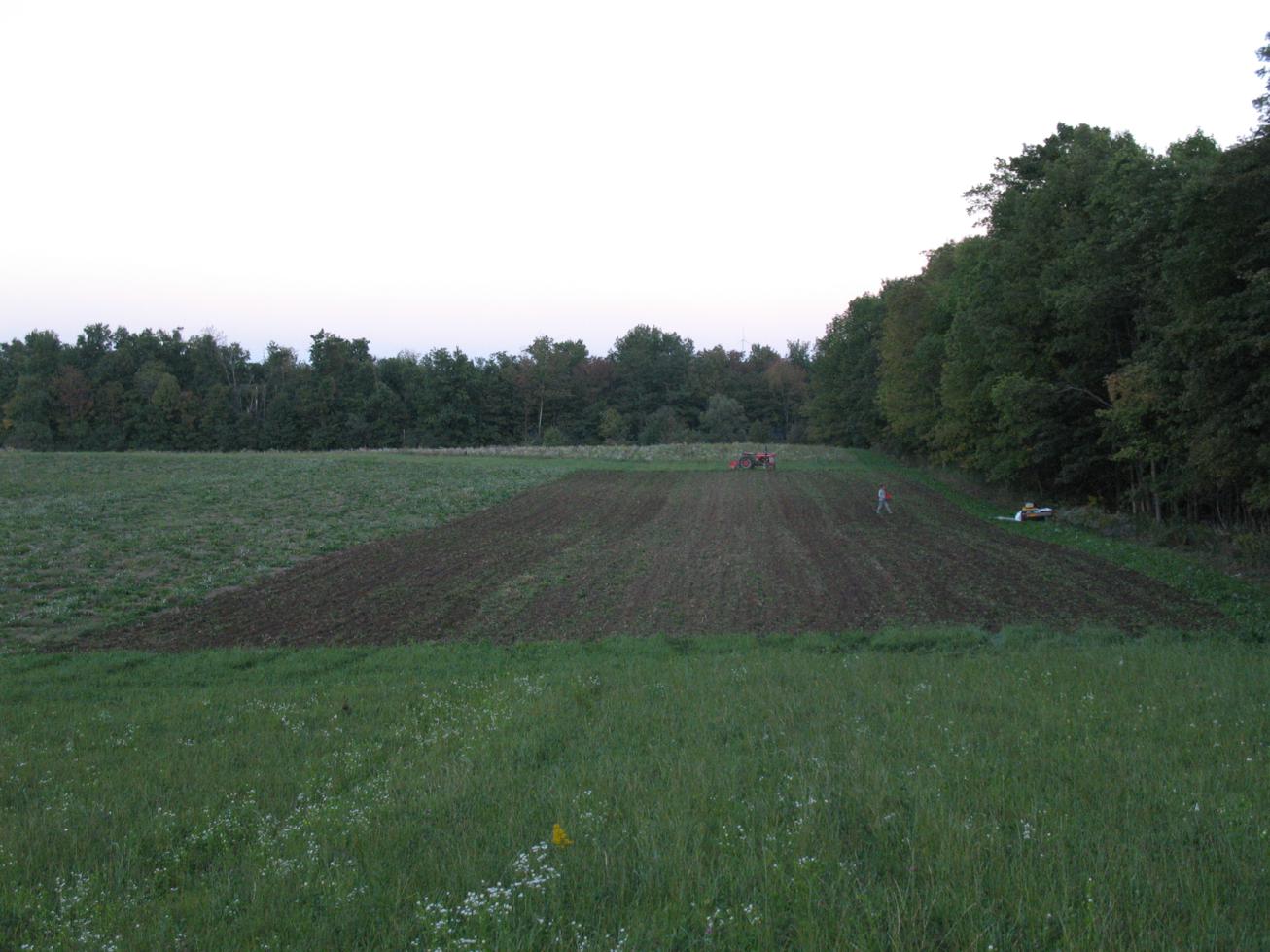
"Cover crops" or "green manures" include a wide range of plants. They are crops that are planted, not to be harvested for anything in particular, but rather to cover and protect the soil, or to be tilled in green to enrich the soil.
Our cover crops will add organic matter to the soil (this will happen when we till them in next spring), which helps improve both soil drainage and water retention. They also protect the soil from compaction and leaching over the fall and winter--bare soil can be beaten down and compacted by rain and snow (this is what happened in our fields over the past few winters), which makes it harder for plants to grow the following year. Also, when there is a lot of rain, nutrients can drain out of the soil. Cover crop plants hold on to these nutrients with their roots. Finally, some cover crops (those in the pea or legume family) are able to pull nitrogen, a key plant growth nutrient, out of the air and fix it in the soil in a form that the following crops can use (in essence, free fertilizer!).
Since we don't yet have animals and their manure on the farm to make compost to improve our soils, we are relying on these cover crops to help us out on the nutrient front.
The crops we are using are: oats with field peas, winter rye with hairy vetch, and straight winter rye. The oats and peas will grow this fall and die over the winter, leaving a mulch layer of plant growth protecting the ground--we are planting them in the first areas that we will work up next spring. The winter rye and hairy vetch will keep growing next spring, so we are planting them in areas that will have summer crops. Peas and vetch both are legumes that fix nitrogen, so they are key in these mixes.
Winter rye, when tilled under in the summer, has alleopathic properties as it decomposes. This means it will inhibit any other seeds from germinating near it, which has the added benefit of helping us against weeds! For the straight winter rye, which we are growing on areas slated for fall crops in 2013, we will be chopping down the mature rye stalks to use for mulch in between beds of the summer crops. Let's hope we get the rest of our cover crops in the ground before Tuesday's rain!
Fruitful Experimentations
/The nights are starting to get colder and summer crops are slowing down their production. So, apparently, are farmers--we've been too busy to blog much during August, but with the shortening days we now have more hours after dark to catch up! Here are just a few random pictures from the last month of what's going on in the fields... we will be blogging more regularly now that the peak busy time of the year is receding! These picture show some of the different crops we tried out on our new land (which in itself is a total experiment!)... most have been doing well.
Below are our indomitable eggplant and peppers. We anticipated 1 to 3 fruits a plant, given how north we are. But so far it's been closer to 10 to 15 fruits a plant, despite considerable flea beetle pest pressure! The black plastic mulch does seem to boost soil temps just enough to let the plants really thrive, even in a northern region. Next year we will try some hotter weather loving cultivars too.
Another winner (we hope) so far this year are some of the winter squash, which are mostly giant. We think for both the eggplant and the squash it's the high calcium soil (since fruit crops tend to like lots of calcium). Hopefully this translates into sweetness in the squash too!
Another winner (and fruit)--watermelons! We just grew one variety this year, but they have been very prolific and sweet, so next year we will try adding yellow flesh melons and full size cultivars. The cantaloupe and honeydew have also been very good--we just need to address the powdery mildew challenges, perhaps by planting a bit earlier.
This is our stand of popcorn. We aren't really sure how tall popcorn is supposed to grow, but it's about 9 feet right now, despite the drought (though we cheated and had it on drip irrigation). Ears are starting to fill out now, so hopefully the weather holds long enough for a good yield!
The ongoing drought meant that we had to add another drip zone for our larger fall crops. Even then, with the soil so dry to begin with, we have struggled to provide enough water for the plants to grow. We did invest in some row cover (the white stuff in the picture) in an attempt to exclude the flea beetles from the crops.
Overall, the crops seem to be growing well on the new ground. There has been a few bug problems, but considering how stressed out the plants must be with the drought, the bugs have not been out of control (except on the poor kale). We look forward to a good fall harvest, and lots of ideas and plans forming over the winter for next year!
More blogging within a week, we promise!
Hop Planting!
/Between harvesting and dragging hoses everywhere around the farm, we haven't had many chances to blog... so we will try to catch up over the next few days with posting pictures showing everything that's been going on around the farm, starting with our first hops getting in the ground! Here's Matt working on the bed (the white stuff to the left are broccoli plants under row cover insect protection).
We bought virus free plants from Madison County AED, and hope to propagate out 120 to 200 hills next year from the 60 plants we are putting in this season. The virus indexed plants were more expensive than standard rhizomes, but since we are going to attempt growing these organically, we thought it would make sense in the long run to try to minimize potential problems from the start (hops have some challenging disease issues in the northeast). We didn't get them in last week due to the hot and dry weather, and we learned during this time that hops do not coexist well in close confines with their neighbors (this mat of hops took a half hour to untangle!)
We planted them into a nursery bed, which is just a temporary bed for them to grow in this first season. Next spring, we will dig them up, divide the clumps of roots and rhizomes into 2 or 3 plants, and replant them at wider spacing in the hop yard.
Right after planting, we trained them up on their temporary trellis (which is only six foot posts). In a real hop yard, the plants can grow 20 or more feet high, so the trellis is a lot more serious (think telephone poles). We are starting small so we have time to save up for the trellising costs!
We laid our drip tape the low tech way today (rather than using the bed maker implement). Matt just used one of his carpentry clamps, which anchors the roll on pretty much anything.
Here's looking back to the near complete nursery bed over the south field's fall crops.
Hopefully the weather continues to cooperate and we get good plant establishment this season so that we have more plants for next season!
More pictures and posts from the field will follow in the next few days!


